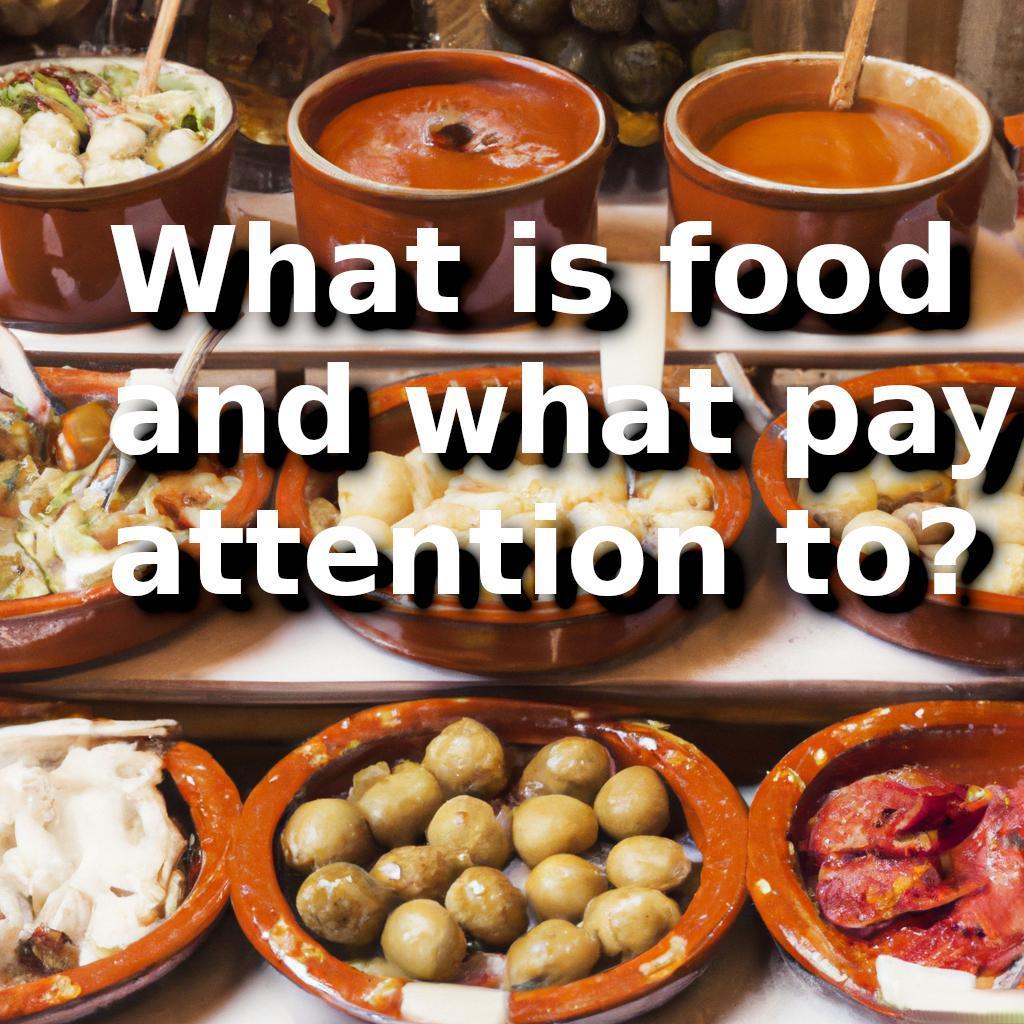


Primitive Palates:
The journey of food begins with our primal ancestors, foraging for sustenance in the wild. Scientifically, this era is marked by the study of archeobotany and the analysis of ancient DNA, offering glimpses into the diets of early humans.
Cooking's Crucial Leap:
The discovery of fire heralded a transformative era in food evolution. Cooking not only made food more digestible but also played a role in human brain development. The study of biomolecular archaeology allows scientists to unravel the secrets of ancient cooking techniques.
Ancient Alchemy and Culinary Arts:
Ancient civilizations such as the Greeks and Romans elevated food to an art form. Culinary science merged with philosophy, as figures like Apicius explored gastronomy and culinary innovation. The pursuit of flavors and preservation methods laid the groundwork for future culinary advancements.
The Scientific Revolution in the Kitchen:
The Renaissance and Scientific Revolution saw a more systematic approach to understanding food. Scientists like Antoine Lavoisier delved into the chemical composition of food, paving the way for modern nutrition science. The microscope became a culinary tool, revealing the intricacies of fermentation and microbial life.
From Farm to Lab:
The 20th century witnessed the industrialization of food production, with science playing a pivotal role in preserving, processing, and enhancing flavors. Food science and technology transformed the way we produce and consume, giving rise to convenience foods and molecular gastronomy.
Contemporary Cuisine and Health:
In the 21st century, science intersects with culinary arts in the pursuit of healthier and sustainable options. Nutritional genomics explores the relationship between genetics and individualized diets, while sustainability science guides choices for a planet-friendly gastronomy.
Food is more than just a source of sustenance. It is the fuel that powers our bodies and minds, and the foundation of a healthy and happy life. Good nutrition is essential for optimal health, and the benefits of a balanced diet are clear.
Eating a variety of nutrient-rich foods can help you maintain a healthy weight, reduce your risk of chronic diseases such as heart disease and diabetes, and improve your overall well-being. Whether you're an athlete looking to enhance your performance or simply looking to live a long and healthy life, food is the key to success.
But it's not just about what you eat – it's also about how you eat. Taking the time to savor your meals, and eating with intention and mindfulness can help you build a healthier relationship with food and enjoy the many benefits that come with a balanced diet.
So don't neglect the power of good nutrition. Invest in your health and well-being by making healthy food choices and prioritizing a balanced diet. Your body will thank you for it!
There is a wide range of foods from various cultures and cuisines around the world. Here are some examples of different types of foods:
Fruits: Apples, oranges, bananas, grapes, strawberries, blueberries, mangoes, and many more.
Vegetables: Broccoli, carrots, spinach, lettuce, potatoes, tomatoes, cucumbers, onions, and many more.
Grains: Rice, wheat, oats, corn, quinoa, barley, and many more.
Dairy: Milk, cheese, yogurt, butter, and many more.
Meat and Poultry: Beef, chicken, pork, lamb, turkey, and many more.
Seafood: Fish, shrimp, crab, lobster, clams, and many more.
Legumes: Beans, lentils, chickpeas, and many more.
Nuts and Seeds: Almonds, peanuts, walnuts, chia seeds, sunflower seeds, and many more.
Beverages: Water, tea, coffee, juice, soda, beer, wine, and many more.
There are many more types of food available and they vary widely depending on cultural and geographical differences.
While food is an essential part of our daily lives, it's important to recognize that there can be a dangerous side to what we eat. Poor dietary choices and unhealthy eating habits can lead to a range of health problems, from obesity and heart disease to diabetes and certain types of cancer.
Processed and fast foods that are high in sugar, salt, and saturated fats can be especially harmful to our health, leading to weight gain, high cholesterol, and other serious health issues. And while we may indulge in these foods from time to time, making them a regular part of our diets can have disastrous consequences.
Additionally, foodborne illnesses are a serious risk that can cause sickness and even death. Contaminated food products, poor food handling practices, and unsanitary food preparation environments can all contribute to the spread of harmful bacteria and viruses.
But it's not all doom and gloom. By being mindful of the food we eat and the way we prepare and handle it, we can minimize these risks and enjoy the benefits of a healthy and balanced diet. So take control of your health and well-being by making informed food choices and prioritizing food safety in your daily life.
The most common food allergens include:
Milk
Eggs
Peanuts
Tree nuts (such as almonds, cashews, walnuts)
Wheat
Soy
Fish
Shellfish (such as shrimp, lobster, crab)
Sesame seeds
It is important to note that food allergies can develop at any age and some people may have allergies to other foods not listed above.
The most dangerous things in food can be divided into two categories: biological and chemical hazards.
Biological hazards are microorganisms such as bacteria, viruses, and parasites that can cause illness when consumed in contaminated food. Examples include Salmonella, E. coli, and Listeria.
Chemical hazards are substances that can contaminate food through human activity, such as pesticides, herbicides, and heavy metals like lead or mercury. Other chemical hazards may arise from food processing or packaging materials.
Other dangerous things in food may include foreign objects such as glass, plastic, or metal fragments that can cause injury when consumed, as well as allergens that can cause severe allergic reactions in some people.
It is important to practice safe food handling and preparation to reduce the risk of foodborne illness and to carefully read labels to avoid allergens or other harmful substances.
To avoid incidents with food products, here are some general guidelines that you can follow:
Check food labels and ingredients carefully: If you have a food allergy, make sure to read the labels of any packaged food product before purchasing or consuming it. Also, be aware of hidden ingredients and cross-contamination risks.
Be cautious when dining out: When dining out, ask the server about the ingredients in the dishes and if the kitchen can accommodate your dietary restrictions. You can also ask to speak to the chef or kitchen manager to get more information.
Keep your kitchen clean: Maintaining a clean and hygienic kitchen is essential to prevent foodborne illnesses. Clean all kitchen surfaces, utensils, and equipment thoroughly, and separate raw and cooked food.
Store food properly: Proper storage of food can prevent spoilage and contamination. Store food in airtight containers in the refrigerator or freezer, and use them within their expiry date.
Cook food thoroughly: Make sure to cook meat, poultry, seafood, and eggs thoroughly to kill any harmful bacteria. Use a meat thermometer to check the internal temperature of the food.
Wash your hands: Always wash your hands thoroughly before handling food, after using the bathroom, and after touching any pets or animals.
Be aware of recalls: Stay informed about food recalls and product warnings to avoid consuming contaminated food products. Check the FDA and USDA websites for the latest information on food recalls.
Here are some tips to help you avoid incidents with food sellers:
Choose reputable sellers: Before purchasing food products, make sure to research the seller to ensure they have a good reputation. Look for reviews or ratings from other customers, and check if they have any certifications or licenses that indicate they follow food safety regulations.
Check for freshness: Make sure to inspect the food products you are buying for any signs of spoilage, such as mold or an off smell. If a food item doesn't look or smell right, it's best to avoid it.
Read labels: Take the time to read the labels on food products to check for any potential allergens or other ingredients that may cause issues for you. If you have any questions, don't hesitate to ask the seller.
Be aware of food safety practices: It's important to be aware of proper food handling and storage practices. For example, make sure that the seller is storing food products at the correct temperature to prevent spoilage.
Speak up if you have concerns: If you have any concerns about the quality or safety of a food product, don't be afraid to speak up and ask the seller questions. They should be willing to provide you with information and address any concerns you have.
Properly storing food at home is important to maintain its freshness, prevent spoilage and avoid foodborne illnesses. Here are some useful tips to store food at home:
Keep perishable foods refrigerated at a temperature of 40°F (4°C) or below. This includes meats, dairy products, eggs, and ready-to-eat foods.
Store raw meat, poultry and seafood in sealed containers on the bottom shelf of the refrigerator to prevent cross-contamination.
Use airtight containers to store dry goods such as cereal, pasta, and rice to prevent them from going stale.
Keep fruits and vegetables separate to prevent the release of ethylene gas, which can cause spoilage.
Label and date all food containers to keep track of when the food was prepared or opened.
Use the first-in, first-out (FIFO) rule to rotate food items and use older ones first.
Store canned foods in a cool, dry place, away from heat and moisture.
Do not store food in opened cans, instead, transfer the contents to a covered container and refrigerate.
Thaw frozen food in the refrigerator, not on the countertop, to prevent the growth of bacteria.
Regularly clean and sanitize the refrigerator, freezer, and pantry to prevent the buildup of mold, bacteria, and other harmful microorganisms.
Food safety is a critical issue that affects us all. Whether you're a consumer, a food producer, or a food handler, it's essential to understand the risks involved and take proactive steps to minimize them.So the next time you sit down to enjoy a meal, take a moment to appreciate the hard work and dedication that goes into ensuring that your food is safe and nutritious. By working together, we can continue to make progress in the field of food safety and build a healthier, happier world for ourselves and future generations.
The history of food is a tapestry woven with threads of science, from the primordial kitchens of early humans to the molecular laboratories of modern gastronomy. As science continues to unravel the complexities of what we eat, the culinary journey remains a fascinating exploration of our evolving relationship with nourishment.
Have a good meal!
We use cookies
We use cookies and other tracking technologies to improve your browsing experience on our website, to show you personalized content and targeted ads, to analyze our website traffic, and to understand where our visitors are coming from. Privacy Policy.